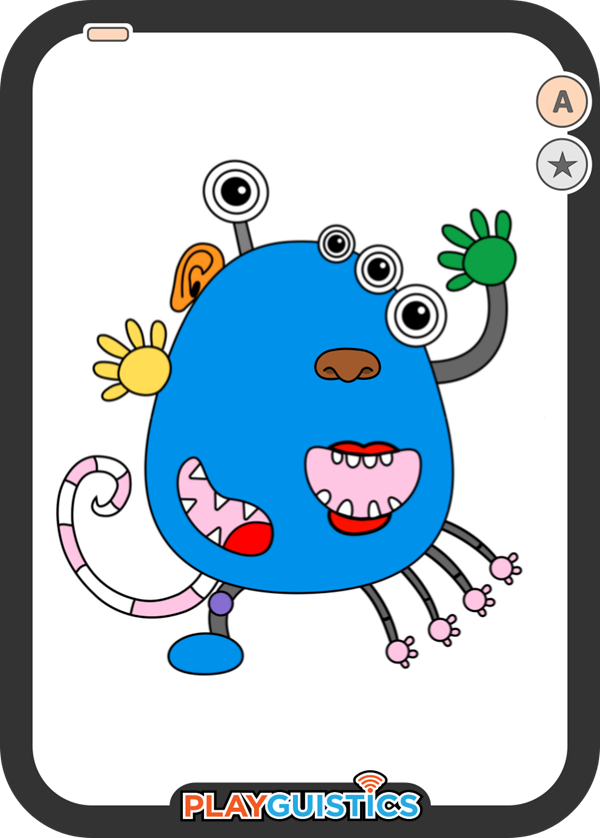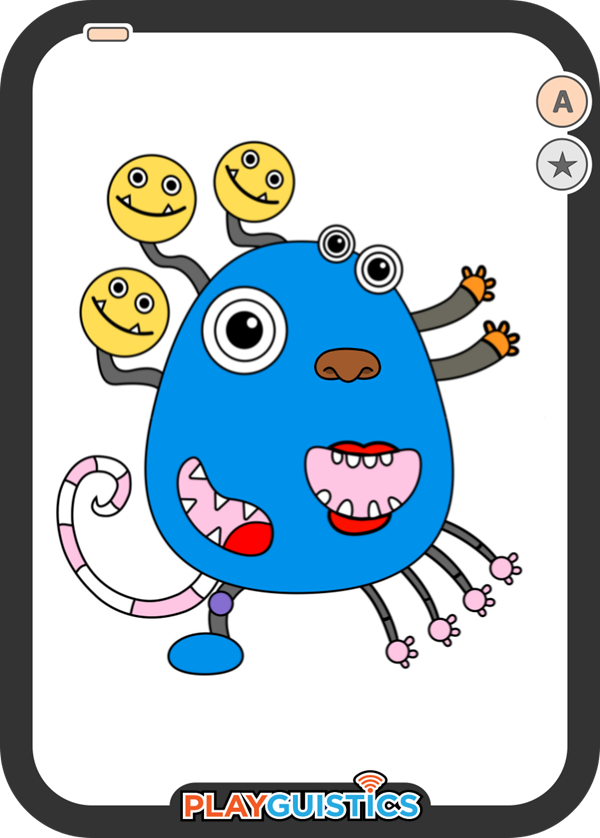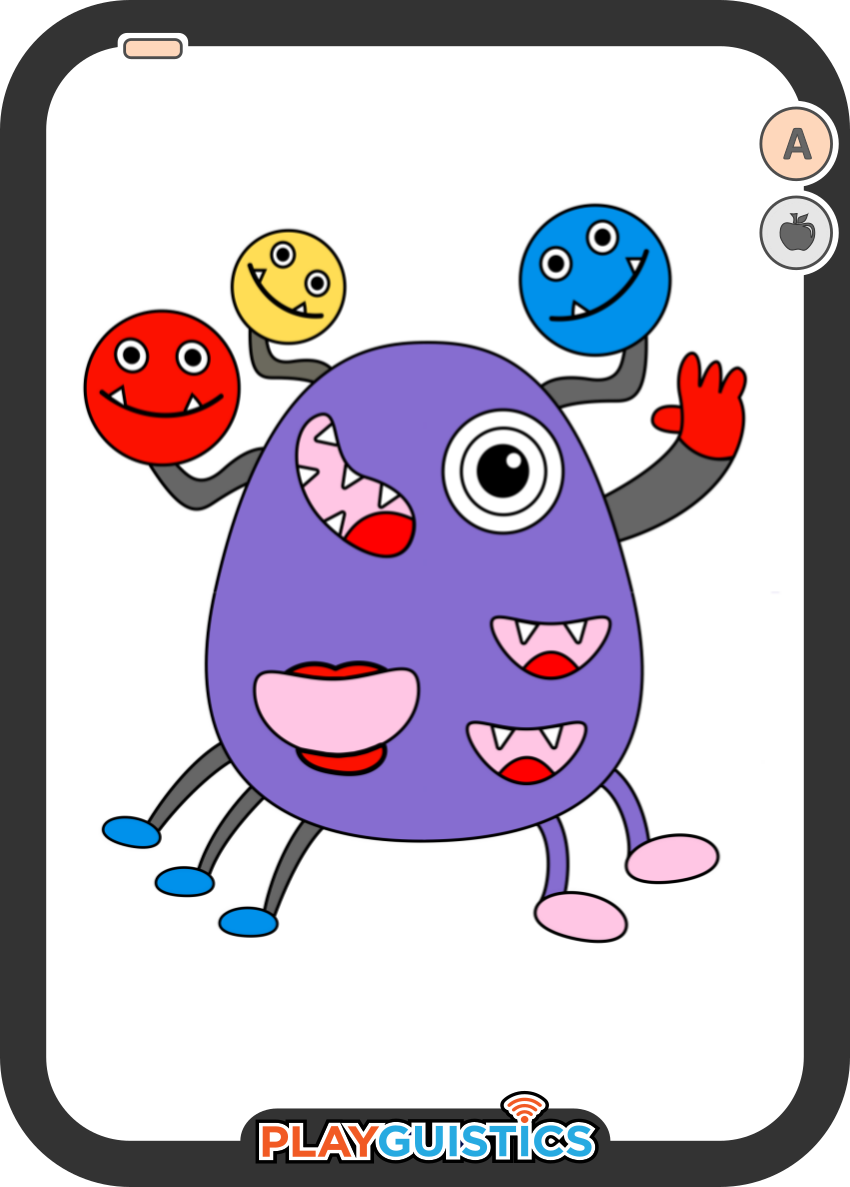About This Activity
|
Overview The Body-Parts Monster Card Game is a fantastic way to provide students with a fun-filled opportunity to practice color and body-part vocabulary. Students will need to know at least 35 vocabulary words to play this game (with Set A), but most of those words are high-frequency vocabulary words, including colors and high-importance body-parts. Currently, 3 different sets of 18 cards are available for this game. It's a deduction card game involving monsters with a wide variety of different common human and even animal body-parts. Players need to use their verbal skills to deduce which of the 18 cards laid out in front of them matches the "secret card" in their activity partner's possession. |
|
|||
|
Monster With A Blue Body
|
Monster With A Blue Body
|
Monster With A Purple Body
|
|
How To Play Materials: Two identical sets of 18 Body-Part Monster Cards are needed for each pair of two participants. This means two sets of Set A, two sets of Set B, or two sets of Set C. Time / Game Round: 1-3 minutes
For more detailed instructions for how to print, prepare, and introduce card-based deduction games like this one, click the blue button below.
|
|
|||
Words to Learn Before Playing
The Core Vocabulary Words listed below are all words that students should learn BEFORE playing this game. Students will only need to learn the words listed for Set A to play this game with that set of cards. However, to play the game with Set B, students will need to learn the words for both Set A and Set B. Likewise, to play the game with Set C, students will need to learn the words for Set C and all previous sets.
| Standard Use Vocabulary | |||||||||
| Used With All Sets | 1, 2, 3, 4, 5, 6, 7, 8, 9, 10*, blue, brown, color, gray, green, monster, orange, pink, purple, red, yellow | ||||||||
*Additional numbers could be used to play this game, but aren't required knowledge to be able to play.
| Vocabulary Words Used in Activity | |||||||||
| Card Set A (18 Cards) | arm, body, ear, eye, foot/feet, hand, head, knee, mouth, neck, nose, shoe, tail, thumb | ||||||||
| Card Set B (18 Cards) | finger, fingernail, hair, hoof, horn, shoulder, toe, tooth/teeth, wing | ||||||||
| Card Set C (18 Cards) | bone, brain, elbow, flower, heart | ||||||||
Important Notes:
- Currently, three different card sets for Body-Part Monster Cards are available. To play with each set of cards, students need to learn the Core Vocabulary Words listed for that set AND all previous sets.
- The sets are arranged in order of importance. Each sequential set uses increasingly less essential body-part vocabulary words. For example, 'brain' is used less often in everyday conversation than 'hand.' Therefore, 'hand' is used in Set A and 'brain' is used (with some other lower-priority vocabulary words) in Set C. However, both words are useful, and definitely worth learning.
- It's entirely possible (and even recommended, once your students understand the game) to combine more than one set of cards together to create a more varied and interesting card deck.
Words to Learn While Playing
The following words will be used to the play this game (with every available set of cards). However, these words don't need to be pre-taught. These words can and should be learned WHILE playing the game.
| Standard Use Vocabulary | |||||||||
| Used With All Sets | are, card, does, doesn't, have, how, is, isn't, it, many, more, no, or, the, this, what, yes, your | ||||||||
Sentence Patterns to Use While Playing
The following sentences and sentence patterns are recommended for use while playing this game. The best way to teach these sentences, is to use them in context while introducing the game and demonstrating how to play it.
| Standard Sentences and Sentence Patterns |
| What color/colors is/are the monster's _________________? |
| The monster's _________________ is/are _________________. |
| Does the monster have one or more _________________? |
| Yes, it does. / No, it doesn't. |
| How many _________________ does the monster have? |
| It has ___ _________________. |
| Is this your card? |
| Yes, it is. / No, it isn't. |




